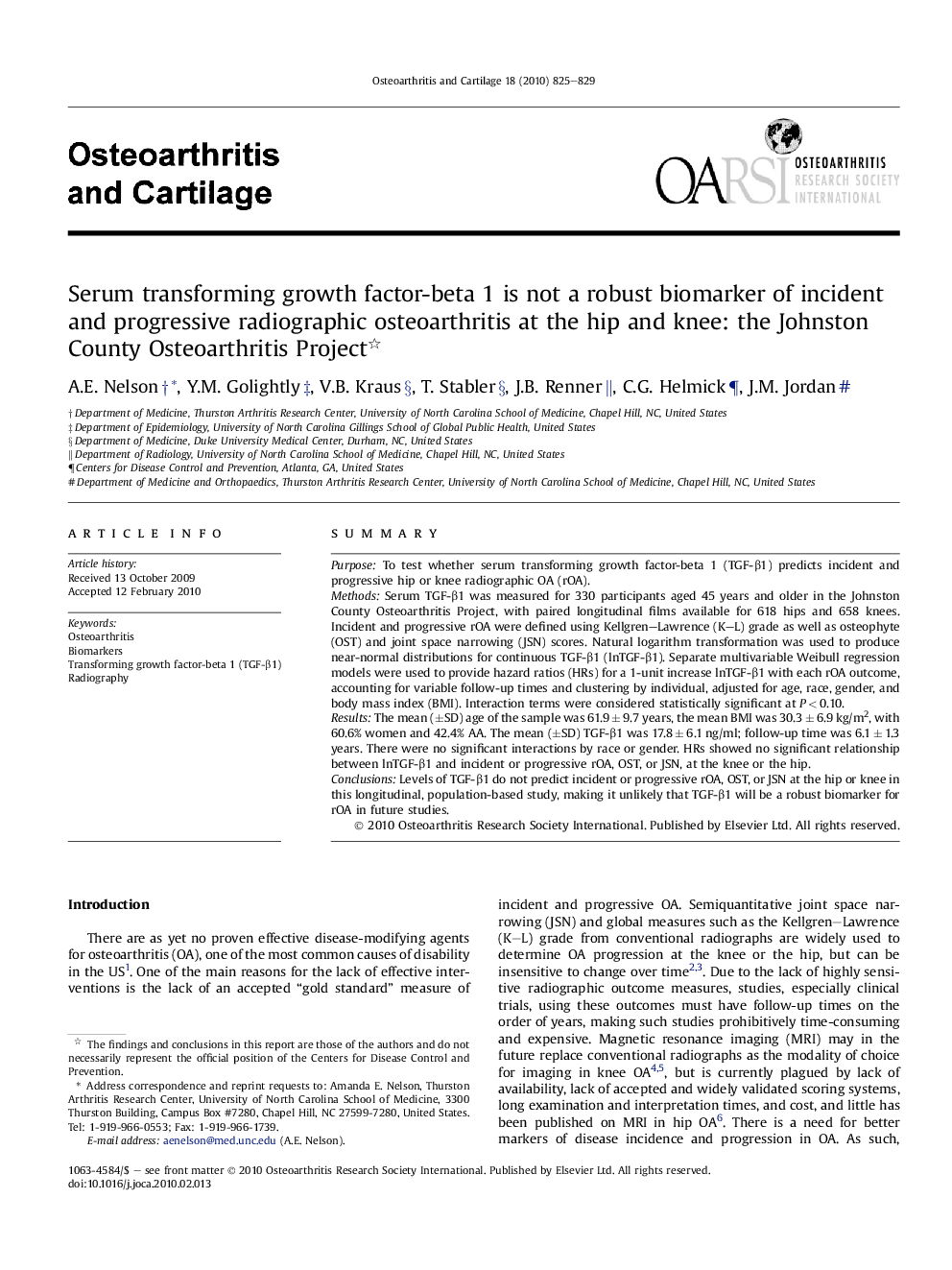| Article ID | Journal | Published Year | Pages | File Type |
|---|---|---|---|---|
| 3380371 | Osteoarthritis and Cartilage | 2010 | 5 Pages |
SummaryPurposeTo test whether serum transforming growth factor-beta 1 (TGF-β1) predicts incident and progressive hip or knee radiographic OA (rOA).MethodsSerum TGF-β1 was measured for 330 participants aged 45 years and older in the Johnston County Osteoarthritis Project, with paired longitudinal films available for 618 hips and 658 knees. Incident and progressive rOA were defined using Kellgren–Lawrence (K–L) grade as well as osteophyte (OST) and joint space narrowing (JSN) scores. Natural logarithm transformation was used to produce near-normal distributions for continuous TGF-β1 (lnTGF-β1). Separate multivariable Weibull regression models were used to provide hazard ratios (HRs) for a 1-unit increase lnTGF-β1 with each rOA outcome, accounting for variable follow-up times and clustering by individual, adjusted for age, race, gender, and body mass index (BMI). Interaction terms were considered statistically significant at P < 0.10.ResultsThe mean (±SD) age of the sample was 61.9 ± 9.7 years, the mean BMI was 30.3 ± 6.9 kg/m2, with 60.6% women and 42.4% AA. The mean (±SD) TGF-β1 was 17.8 ± 6.1 ng/ml; follow-up time was 6.1 ± 1.3 years. There were no significant interactions by race or gender. HRs showed no significant relationship between lnTGF-β1 and incident or progressive rOA, OST, or JSN, at the knee or the hip.ConclusionsLevels of TGF-β1 do not predict incident or progressive rOA, OST, or JSN at the hip or knee in this longitudinal, population-based study, making it unlikely that TGF-β1 will be a robust biomarker for rOA in future studies.
